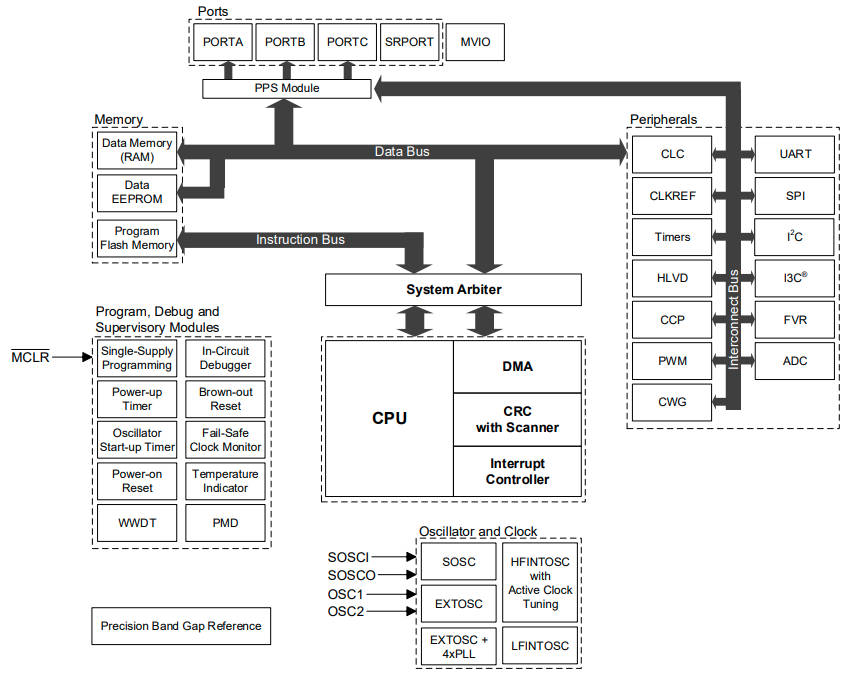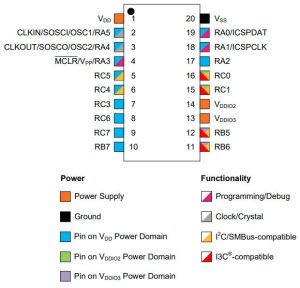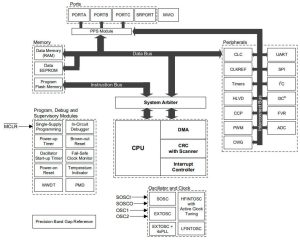
PIC18-Q20 parts, as they will be known, have the company’s ‘multi-voltage’ IO so that they can work in circuits with up to three different logic voltages.
“Compared to I2C, I3C offers higher communication rates and lower power consumption, all while maintaining backward compatibility with legacy systems,” according to the company. “With I3C functionality, flexible peripherals and the ability to operate on three independent voltage domains, PIC18-Q20 MCUs are well suited to be used in conjunction with a primary MCU in a larger overall system.”

In each case, one 1.8 to 5.5V domain covers the core and almost all of the IO.
The IO exceptions are a pair of pins for each special voltage domain whose functions include I3C – so two on 14pin types and two+two on 20pin types.
Independent of core (and other IO pins) voltage, the voltage domain for the special pins can be 1.62 to 5.5V, limited to 3.63V if I3C is enabled.
In addition, the special domains and their pins have a separate low-voltage mode where the I3C can work down to 0.95V, giving it a 950mV to 3.63V range.
Only I3C target device mode (MIPI Basic Specification 1.0) is supported, plus ‘Target reset action (RSTACT) CCC from spec. 1.1 and dynamic address assignment. 13C interfaces can also be set to an I2C mode.
PIC18F16Q20 Curiosity Nano Evaluation Kit is available for hardware development.
Find the PIC18-Q20 product page here, and the data sheet here







